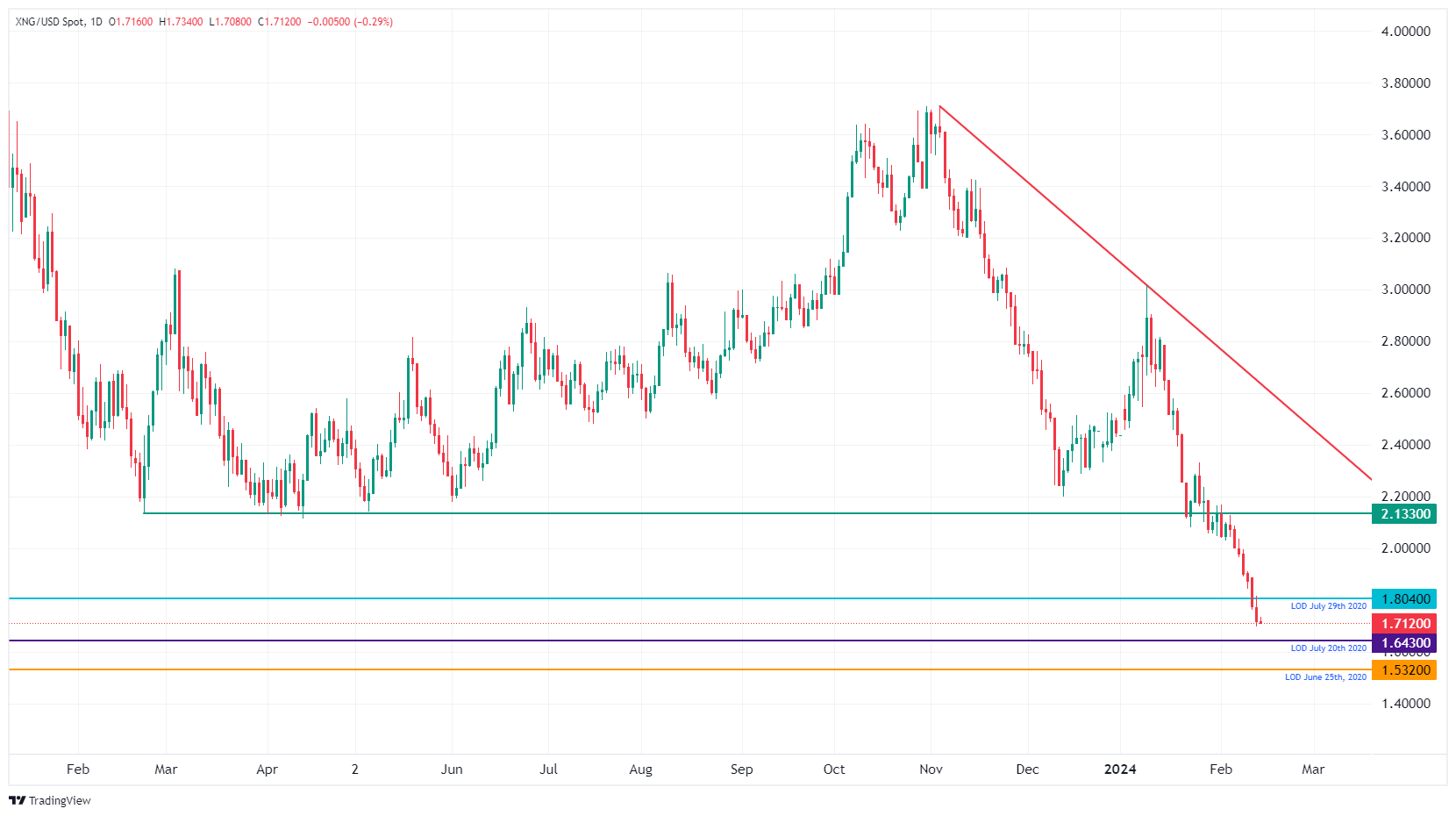- Natural Gas is experiencing its eighth consecutive day of losses.
- Gas prices have dropped 20% since the beginning of February.
- The US Dollar Index soared on the back of red-hot inflation and consolidated its gains on Wednesday.
He Natural Gas (XNG/USD) continues to suffer losses, since February has been totally negative for fossil fuel. This time, the further movement comes as Shell has published an outlook in which demand for liquefied natural gas (LNG) will reduce substantially between now and 2040, given the current pressures around the world to abandon fossil fuels. . The outlook supports the general trend seen in both Oil and Gas, with various administrations around the world taking steps to further limit and phase out use on all fronts.
The US dollar (USD) is trying to consolidate its current position after having recorded significant gains following the publication of a report on US inflation that pointed to strong price pressures. Markets had to further push back their expectations of an initial rate cut by the US Federal Reserve (Fed) in June-July. This sent stocks plummeting, although they are currently recovering ahead of the US opening bell.
Natural Gas is trading at $1.70 per MMBtu at the time of writing this report.
Movements in the Natural Gas market: Grim prospects
- Shell states in its outlook that LNG demand in 2040 will be lower than expected.
- The adjustment of Gas prices in Europe shows that operators are focusing on replenishing European Gas tanks for next winter.
- Europe will have to seek 5% more LNG supply to reach the same gas storage levels as in 2023 heading into winter.
- The warm front is approaching as expected and temperatures are forecast to rise to unusual levels, with London reaching 13 degrees Celsius.
Natural Gas Technical Analysis: More recession to come
Natural Gas is unable to stop the current recession that has already lasted eight consecutive days. Supply continues to flow and demand remains rather tepid. Add to this the long-term outlook, where LNG and other fossil fuels are being phased out, and a rapid return to higher levels does not look likely in the near term.
On the positive side, Natural Gas faces some fundamental technical levels to make a comeback. Firstly, $1.99, where there was an accelerated decline. Next, the blue line at $2.13 with the triple bottom of 2023. In the event that Natural Gas sees demand suddenly rebound, $2.40 may possibly come into play.
We must not lose sight of $1.80, which was a fundamental level in July 2020 and should now act as a limit. Should US President Biden's moratorium be lifted, along with additional supply from Canada, which is exporting more to cover US gaps, $1.64 and $1.53 (2020 low) are targets to watch. consider.
XNG/USD (Daily Chart)
Frequently asked questions about Natural Gas
What fundamental factors determine the price of Natural Gas?
The dynamics of supply and demand is a key factor that influences Natural Gas prices, and is in turn influenced by global economic growth, industrial activity, population growth, production levels and inventories. Climate influences Natural Gas prices because more Gas is used during cold winters and hot summers for heating and cooling. Competition from other energy sources influences prices as consumers may opt for cheaper sources. Geopolitical events, such as the war in Ukraine, also play a role. Government policies related to extraction, transportation and environmental issues also influence prices.
What are the main macroeconomic publications that influence Natural Gas Prices?
The main economic publication that influences Natural Gas prices is the weekly inventory bulletin of the Energy Information Administration (EIA), a US government agency that produces data on the gas market in the United States. The EIA Gas bulletin usually comes out on Thursday at 14:30 GMT, the day after the EIA publishes its weekly Oil bulletin. The economic data of the large consumers of Natural Gas can influence supply and demand, among which China, Germany and Japan stand out. Natural gas is primarily priced and traded in US dollars, so economic releases affecting the US dollar are also factors.
How does the dollar influence Natural Gas prices?
The US dollar is the world's reserve currency and most commodities, including Natural Gas, are quoted and traded in international markets in US dollars. Therefore, the value of the Dollar influences the price of Natural Gas, since if the Dollar strengthens, fewer dollars are needed to buy the same volume of gas (the price falls), and vice versa if the dollar strengthens.
Source: Fx Street
I am Joshua Winder, a senior-level journalist and editor at World Stock Market. I specialize in covering news related to the stock market and economic trends. With more than 8 years of experience in this field, I have become an expert in financial reporting.







